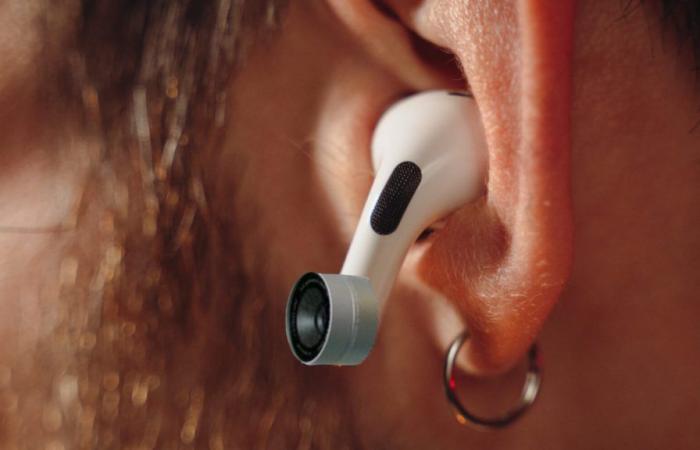According to analyst Ming-Chi Kuo, who validates a rumor that was already out several weeks ago, Apple’s next AirPods Pro will have, at a minimum, an infrared camera. Eventually, the advent of photographic modules on the headphones seems inevitable.
A camera in an earbud, what for? At first glance, the rumor of future AirPods Pro capable of seeing the world makes no sense. Why would Apple add a camera module in an earbud, especially with the constraints of size and autonomy. Since July 1, the date of the release of a blog post by analyst Ming-Chi Kuo, many media outlets have been relaying this amusing rumor. Everyone is wondering why Apple would go in this direction.
Yet, this idea is far from stupid. At a time when generative AI is on the rise, with the emergence of many gadgets dedicated to the use of these artificial intelligences, headphones can stand out. The question remains in what form.
This content is blocked because you have not accepted cookies and other trackers. This content is provided by TikTok.
To be able to view it, you must accept the use made by TikTok with your data which may be used for the following purposes: allow you to view and share content with social media, promote the development and improvement of Humanoid products and its partners, show you personalized advertisements in relation to your profile and activity, define a personalized advertising profile for you, measure the performance of advertisements and content on this site and measure the audience of this site (learn more)
By clicking on “I accept all”, you consent to the aforementioned purposes for all cookies and other trackers placed by Humanoid and its partners.
You may withdraw your consent at any time. For more information, please read our Cookie Policy.
I accept everything
Manage my choices
First, infrared cameras?
According to Ming-Chi Kuo, Apple would like to produce camera modules dedicated to its high-end wireless headphones in 2026.
Future AirPods Pro, likely scheduled for 2026-2027, would use infrared sensors to see the world, presumably in black and white. This technology would allow Apple to improve the audio experience (the cameras would tell the AirPods which direction you are looking), while also allowing you to control your music with gestures.
As with the Apple Vision Pro, it would become possible to do things by tapping your fingers, perhaps even controlling your other devices.
Why infrared? Probably for two reasons. This technology allows you to see in the dark and consumes less energy than a classic RGB camera. The battery is a big issue for headphones, while AirPods are small devices designed to work for several hours without recharging. The question of data transmission to the phone is also interesting. Can headphones store images and handle data processing locally? Or will they have to constantly rely on an iPhone or Mac to function?
Secondly, how can we not think about AI?
By 2026, another sector is expected to play a significant role in our lives: generative artificial intelligence. Meta and Ray-Ban’s glasses, which can answer difficult questions using a sophisticated language model, set an interesting precedent in the market for wearables. Since the beginning of the year, their wearer can ask them things like “Look and tell me what this monument is.”An image recognition model will then respond, like a tourist guide integrated into the face.
This is an interesting prospect for headphones that, regardless of their brand, already integrate a voice assistant today. “Hey Siri” on AirPods, “OK Google” or “Alexa” for competitors… Headphones capable of answering practical questions, telling you if you’re going the wrong way or translating restaurant menus make sense. The question of autonomy remains, again.
Another question: is an infrared camera sufficient for this type of visual identification? Or will brands have to rely on more traditional photo sensors? In any case, in the era of AI and hyperconnectivity, cameras integrated into wearable products make more sense than ever. It would not be surprising to see other brands launch well before Apple, while waiting for the brand to refine its AI strategy with Apple Intelligence, expected this fall (except in Europe).
This content is blocked because you have not accepted cookies and other trackers. This content is provided by YouTube.
To be able to view it, you must accept the use made by YouTube with your data which may be used for the following purposes: allow you to view and share content with social media, promote the development and improvement of Humanoid products and its partners, show you personalized advertisements in relation to your profile and activity, define a personalized advertising profile for you, measure the performance of advertisements and content on this site and measure the audience of this site (learn more)
By clicking on “I accept all”, you consent to the aforementioned purposes for all cookies and other trackers placed by Humanoid and its partners.
You may withdraw your consent at any time. For more information, please read our Cookie Policy.
I accept everything
Manage my choices
Subscribe to Numerama on Google News to never miss a thing!






